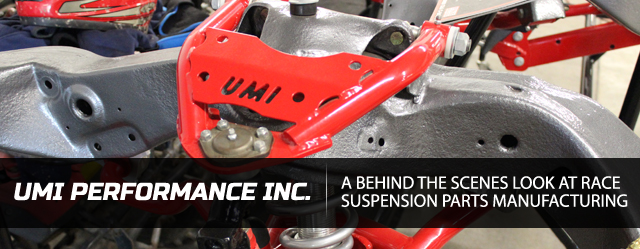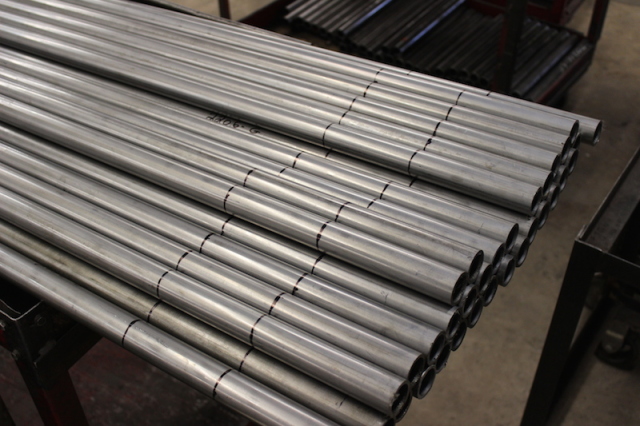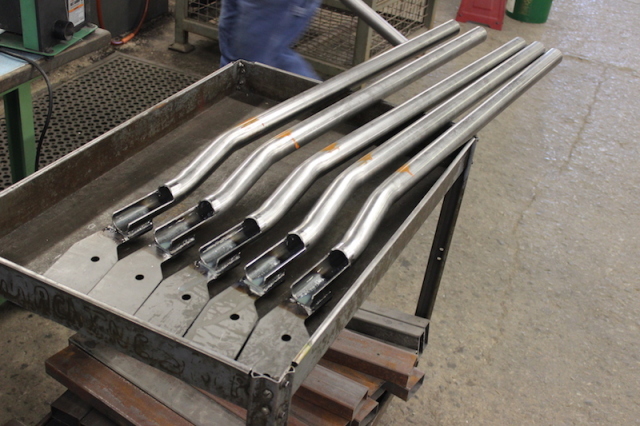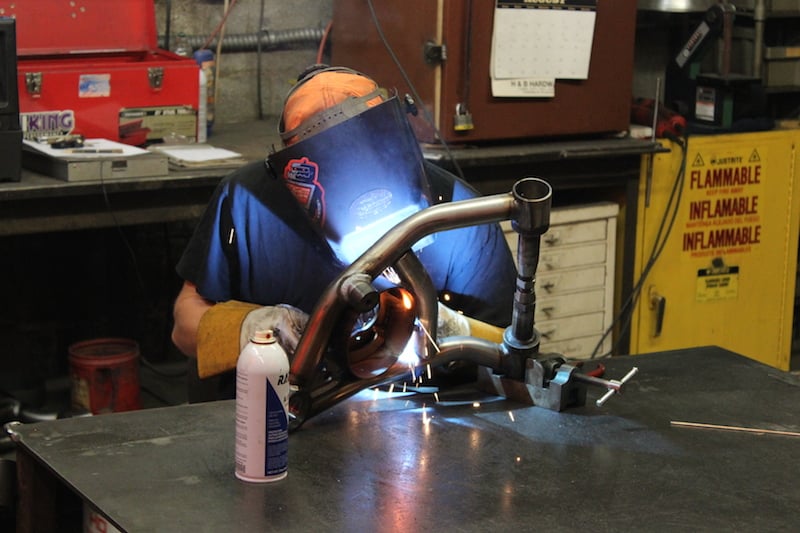Philipsburg, Pennsylvania, is a small town in the center of the state with a population of 2,770 people in 1,512 houses. Smaller than most small towns, but there seems to be an abundance of talent. Two-time NFL Pro Bowl Oakland Raider’s Long snapper/Defensive End Jon Condo and MLB St. Louis Cardinal’s First Baseman Matt Adams are both graduates of the only high school in town.
Despite the success in professional sports, Philipsburg has a bigger talent that the town is becoming better known for. UMI Performance Inc., has earned its way into the town’s Hall of Fame. Located near two local racetracks, the team at UMI uses their own cars as test platforms for new products. We wanted to see how the evolution from idea to finished product happens at the UMI Performance shop, so we scheduled a visit.
About UMI Performance Inc.
Ramey Womer, UMI Performance Product Designer, Engineer and Sales, explained that the company actually started when Ryan Kirkwood began making parts for his own car in his father’s shop.
We want to be known as an ultimate premium. – Ramey Womer
Apparently the younger Kirkwood began racing his car at the local tracks. From time to time, a part would break, leaving the young driver to find a way to fix his race car. “Ryan started building car parts in Denny’s shop. Then he would build a couple of something more and sell it on eBay,” said Womer. “As his parts selection got larger, they began seeing that they could meet their machine shop quotas by selling the parts that Ryan was coming up with.”
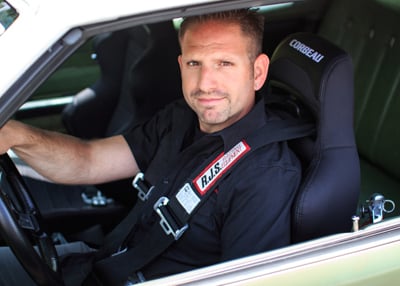
UMI Performance Inc., Founder Ryan Kirkwood. Photo from www.sema.org
One of the early products that helped launch the company was Fox-body Mustang torque boxes. Ryan began making these pieces and selling them on eBay. One piece turned into one-hundred, then one product turned into ten products.
Soon the suspension business was large enough to become a company of its own. Left with the problem of naming the company, Ryan, who is very loyal to his family, paid homage to his father’s original machine shop by calling the new business Utmost Machine Incorporated (UMI).
Company Values
“One of the nicest things about Ryan as the company President is, he is a hands-on guy. He’s not a money guy that owns a suspension company,” explains Womer. “He’s a car guy that needed parts for drag racing, that had access to the machinery and materials to make his own.”
It’s clear that UMI Performance Inc., has some basic fundamentals that drive the way this company does business. Among those company principals are; everyone gets involved in the manufacturing. Practically everything is done under one roof and everything is American made. Even the bar stock is from an American source. The only processes or items not made in the UMI building are the boxes that the parts are shipped in and the hard chroming process that is done at a nearby facility that is set up and EPA permitted for chrome work.
UMI's design and testing station harbors several different vehicle platforms for the design work of new components. The fully equipped installation bays are a necessity in replacing OE parts and checking new designs.
“Ryan and Denny have a dedication to US manufacturing. They are very patriotic and their whole goal is to keep everything right here.” Pointing out that machinist’s pride that the company was founded on, “We don’t even outsource to local machine shops. We do everything under one roof. Even small parts like tube adapters, we don’t even source those out, they are made under our roof,” he added.
Ultimately it’s all about quality control for the company, and that is easy to see. Understanding what drives them to be so precise was the goal. “Fit and finish is important. We want to be known as an ultimate premium.”
Product Design
According to Womer, the product design structure that was used when the Kirkwoods started the company is practically the same method used today. Researching what the racer’s needs were online in forums and at the racetracks, Kirkwood finds a part that could be made better. “One of the things that Ryan has been good at in developing new products is to listen to what the customers of other brands are saying.”
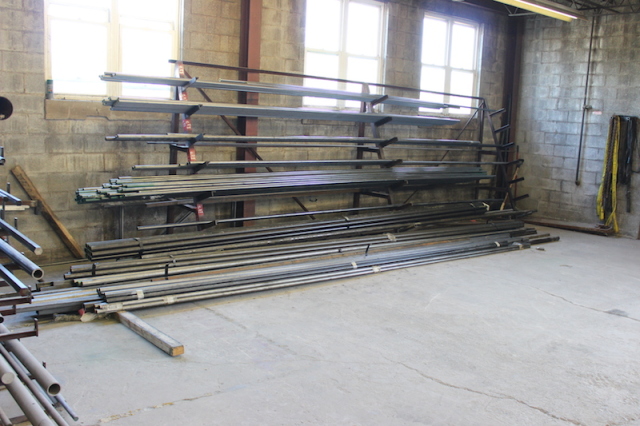
The parts begin as US made raw material, mostly cold rolled steel or chromoly tubes, flat plate and bar stock.
“For instance, if they are saying it’s a good part, but if they only had done this or that, Ryan would take that data and incorporate changes and modifications in his design. Sometimes it would be a different wall thickness or a different material. Other times it would be an aesthetic change. He would actually pre-work the product before it was even designed.” He finished by saying, “Then he would build out his design and do the prototype work.”
How The Parts Are Made
Looking at the work floor it’s hard to imagine how the straight tubes of cold rolled steel and chromoly turn into high quality suspension components. “It’s pretty interesting when people coming through our facility on shop tours can’t believe that we do all of this in one building,” said Womer as he began to explain the process of building a component like a torque arm.
The round and square tubes are cut precisely with a band saw while the smaller parts are generally punched or cut out of flat plate.
“It begins life as steel tubing,” he stated. “We have the option of mild steel or chromoly, then we add some plate to build the back bracket. Generally we cut about 100-pieces for the top of the torque arms, then cut another 100- pieces for the bottom of the torque arms.”
Tubing is bent with a semi-automatic bender that requires hands-on fabrication by a live body to ensure quality.
Once the raw materials are cut, the tubing still needs to have some fabrication work done so that it has the correct angles and bends. “We use an Ercolina brand, US made tubing bender, to bend the 100-pieces of tubing. The bender is semi-automatic, so it requires human hands to set the machine’s adjustments and measure the tubing’s bends against a master jig.” Having a person touch the parts at each station has always been considered a great method of quality control in manufacturing.
Into The Mill
Once the materials have been cut, formed, and bent correctly, the whole collection moves into the milling area. According to Womer, the number of lathes and mills constantly varies, but currently the shop is set up with five-metal lathes and five-mills.
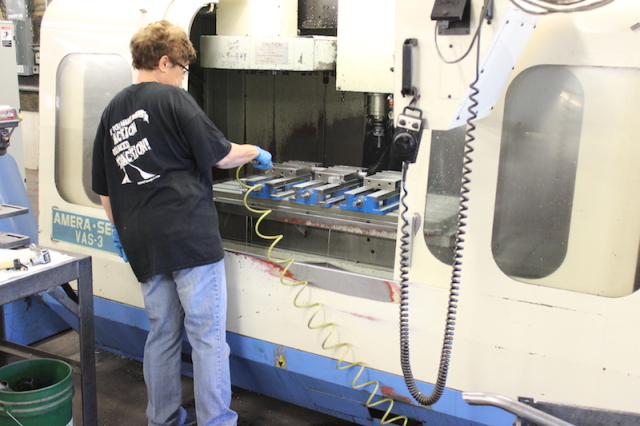
The pieces make their way to the milling area where they are prepped for welding by coping out extra material.
The milling process is an extra step in quality fabrication done by the crew at UMI. Getting metal to fit tightly where two-pieces of steel are joined is important in race component fabrication for the overall strength of the part. “Whenever we have a joint in the product, we don’t just hack out the metal. We cope out the joint so that the metal fits perfectly,” Womer states.
Everything needed to construct the assemblies are made in house.
“Then we send all those subassembly pieces to the weld shop. The weld shop has six welders with three dedicated MIG technicians and three dedicated TIG technicians. Some guys can do both processes and have both types of welders at their stations,” Womer continued. “The welders are given a weld sheet that will tell them what they are welding, how many, and where they are going. For example, the weld sheet might tell the welder that they need to weld five torque arms that are going to stock and one torque arm that needs to go out in the next hour. Then they will weld the stuff together using all the techniques and jigs,” Womer explained.
Red or Black
Once the parts are physically welded, they can go to either red or black. “We actually have a table that is painted red and any parts on that table will go to get powder coated red. Obviously the other table has parts that get painted in gloss black,” explained Womer. To prep the surface, the crew takes the newly manufactured parts to a sand blast station. “We take them in stages to the sand blast area where they get sandblasted. Instead of just wiping the shipping oils off of the metal with solvent, we actually hatch it in a sand blast booth so that it gets completely blasted and is left with a rough surface finish on it.”
The material gets put into a jig to hold it in place for spot welding, where the sub-assemblies start to take shape.
The etched surface allows the finish to have a keyhold on the metal. “Then it goes to powdercoat, which is also in-house. We use a premium powder coating material. A product that is considered the ‘steak and lobster’ of powder coating,” Womer said proudly. “From there it goes to hanging racks where the products are heated to 400 degrees to cure the powder coating.”
The assemblies then get completely welded and rechecked against the jig for proper fitment, then prepped for coating.
“The powder coat is actually a plastic type material so when it is heated up, it flows into the pores of the etched surface of the metal, which makes it pretty much bullet-proof. Of course, if you whacked it with a hammer it might chip, but with normal wear and tear, it will stay nice,” concluded Womer.
The sub-assemblies head over to the sand last booth where they are prepped for coating.
Final Assembly
After the coated part is cured and ready for handling, it moves one step closer to installation on a car. “Then it will go to the assembly area where we put all the bushings in, screw all the rod ends in, and that type of thing,” stated Womer. “Now you have a torque arm that is painted, laying on bubble wrap on a soft table–all of our tables are soft so that they don’t scratch the parts,” he added. “The assembler then wipes them down with McGuire’s spray wax or some kind of detailer. This is done so that when you take them out of the package, they are ready to go.”
After getting coated in either red powder coating or glossy black, the assemblies go through final assembly and get packaged for routing.
Packaged and waiting for a customer, the part may take one of several different routes to get to their final point for installation. “They will either go out by ones and twos to mail order customers or scheduled in lots to Summitt, Jegs, or any of those big distributors. Every once in a while one will go in the back room and get put on the car so Ryan can go race it,” Womer said with a chuckle. “So the process that came in one door will end up as little as two days later, going out the other door to the customer.”
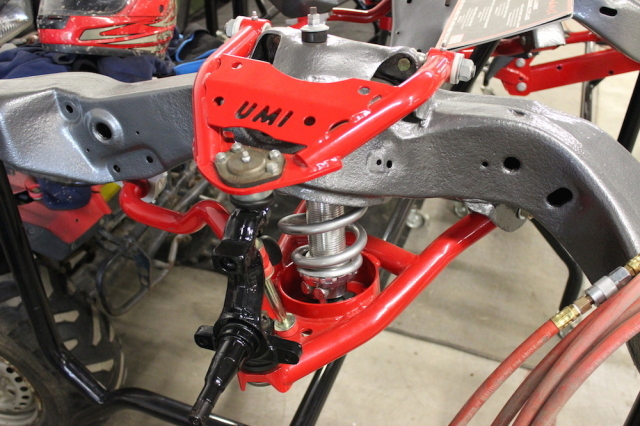
All the dedication, company values, work ethic, and pride come through in the final part – especially when it is bolted onto the chassis.
The Final Word
As a company, UMI Performance went to the Holley LS Fest for the first time in 2014. “When we went to the dragstrip, all of our guys were like; ‘Holy crap, half of the cars here have UMI parts on them!’ We felt like celebrities because almost everyone you talked to either had our parts or were considering our parts for their cars,” claimed Womer.
The team has built a solid reputation among racers and street enthusiasts. For more information about UMI Performance, visit them online at www.umiperformance.com



